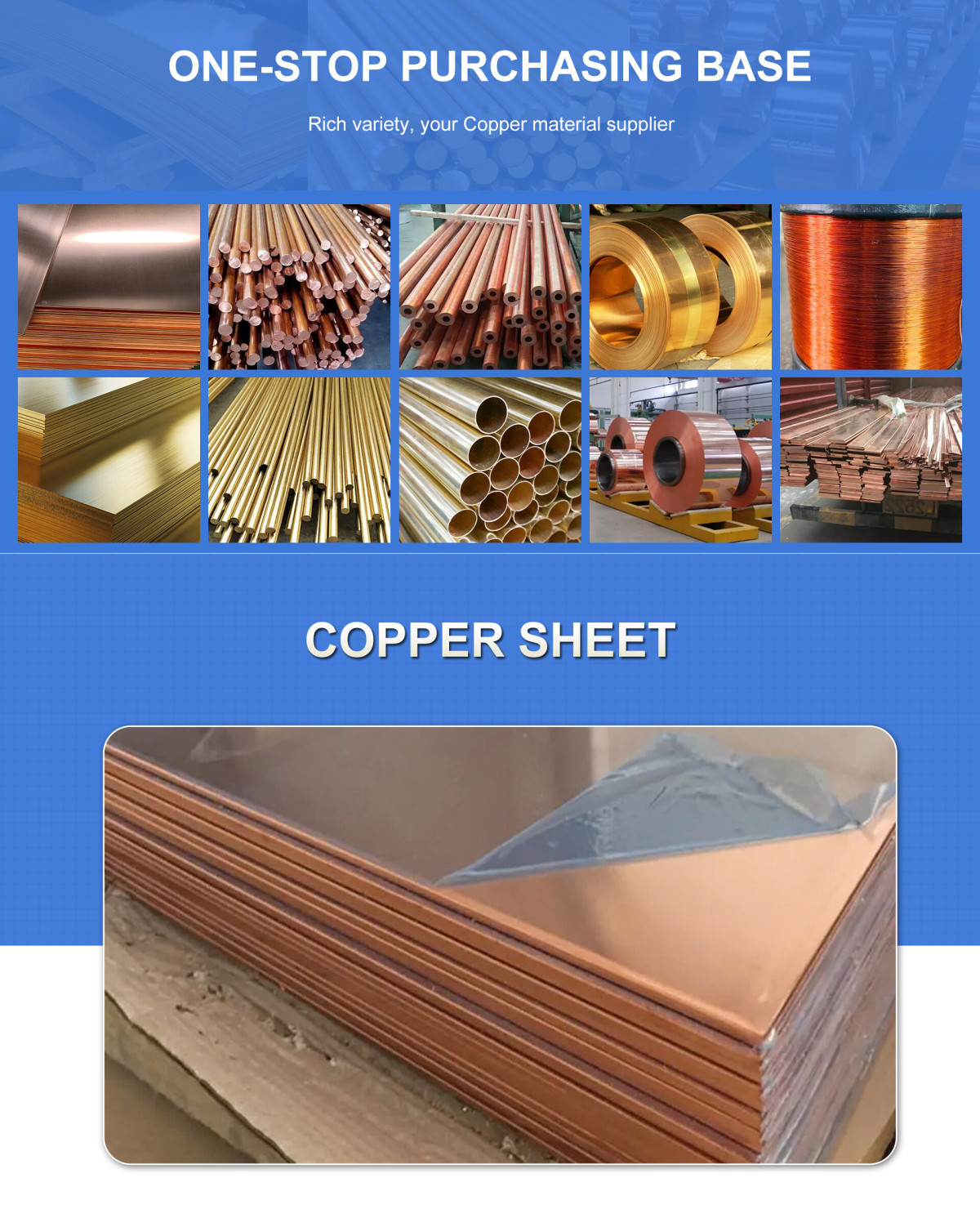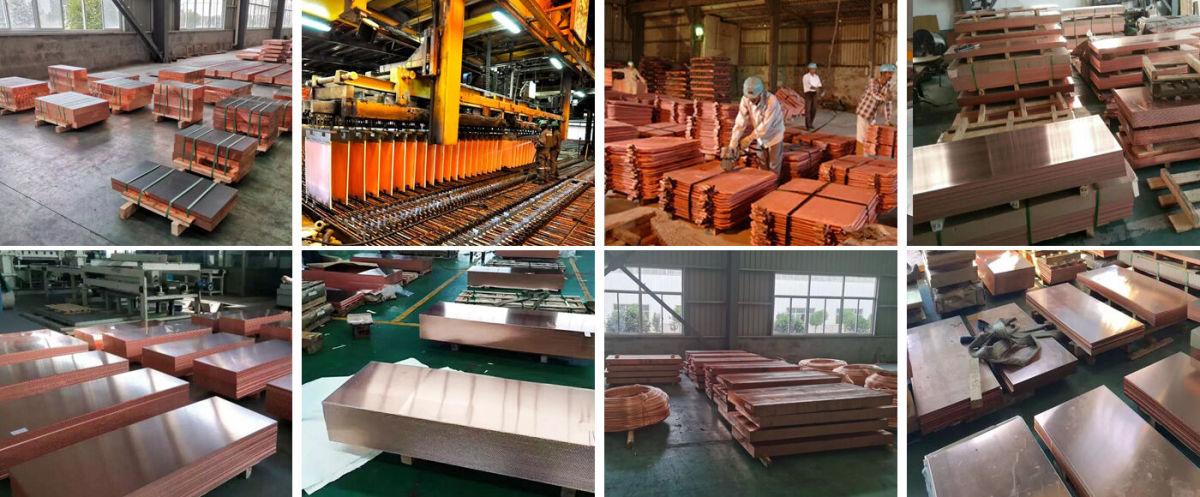
Detailed size range
Thickness:
Common thicknesses are 1mm, 2mm, 4mm depending on product specifications.
Other standards (such as BS EN 13599:2014) allow a wider range, covering 0.05mm to 25mm, depending on application requirements.
Width and length:
Standard widths range from 10mm to 1250mm (reference BS EN standards).
Some plates are fixed at 500mm in length and vary in width from 10mm to 200mm (common specifications, which may include C44300).
Tolerance requirements:
Thickness deviation must comply with Table 2 of the ASME specification.
Flatness tolerance varies according to plate length, such as arc depth ≤1.3mm when length ≤1000mm.
International standards
ASTM standards:
ASTM B111/B 111M: Applicable to C44300 seamless copper tube (tube standard, here for reference only).
ASTM B series: clearly specifies the chemical composition, mechanical properties and dimensional requirements of C44300 plates, suitable for pressure vessels and heat exchangers.
ASME standards:
ASME Boiler and Pressure Vessel Code (BPVC): covers the mechanical properties and thickness tolerances of C44300 in hot rolled (M20) and annealed (O25) states.
European standards:
BS EN 13599:2014: specifies the composition, electrical properties and dimensional tolerances of copper plates (thickness 0.05-25mm, width 10-1250mm), suitable for electrical purposes.
Other standards:
ISO standards: such as ISO m-2004 and B171m-2004, used for the processing and acceptance of naval brass.
GB/T 5231-2012: The corresponding grade in the Chinese standard is HSn70-1, which specifies the chemical composition of processed copper alloys.
Copper (Cu): 69.0% - 73.0% (most literature supports 69.0% - 71.0%, but some standards such as EN give 70.0% - 73.0%).
Tin (Sn): 0.8% - 1.3%, used to enhance corrosion resistance.
Zinc (Zn): Balance, usually 25% - 29%.
Arsenic (As): 0.02% - 0.06%, inhibits dezincification corrosion.
Impurities: Lead (Pb) ≤ 0.05%, Iron (Fe) ≤ 0.10%, Nickel (Ni) ≤ 0.5%, Total impurities ≤ 0.3%.
Physical Properties
Density: 8.53 g/cm³ (most sources), 8.3 g/cm³ in some sources.
Melting Point: Liquidus 940°C (1720°F), Solidus 900°C (1650°F).
Thermal Conductivity: 64 - 110 W/m·K.
Electrical Conductivity: 25% - 28% IACS (International Annealed Copper Standard).

C44300 copper plate production process and product advantages:
Production process
Raw material processing:
Copper plate production starts with raw materials (copper ingots), and then goes through pre-treatment steps such as water washing, degreasing, and cleaning to remove surface impurities.
The milling process is used to ensure that the surface of the material is flat and uniform.
Hot processing:
Hot rolling: Rolling at high temperature to form a preliminary plate, and further adjust the shape through straightening.
It is necessary to control the content of impurities (such as lead, iron, etc.) to avoid cracking during hot pressing.
Cold processing and annealing:
Cold rolling: Improve the strength and surface accuracy of the plate.
Annealing: It is carried out in the temperature range of 600-700°C to eliminate internal stress and improve processing performance. Evidence shows that the annealing time needs to be adjusted according to actual needs.
Surface treatment and finishing:
After cold rolling, pickling is required to remove the oxide layer, followed by finishing rolling (medium/fine) to improve the surface quality.
Some processes may involve painting or drying (such as primer and topcoat spraying) to enhance corrosion resistance.
Inspection and packaging:
The finished product must pass mechanical property tests (such as tensile strength, hardness) and corrosion resistance tests, and finally be packaged and stored.
Product advantages
Excellent corrosion resistance:
Contains trace amounts of arsenic (0.03-0.06%) and tin (0.8-1.3%), which can effectively inhibit dezincification corrosion, especially suitable for marine environments and corrosive media such as sulfur compounds.
Excellent mechanical properties:
Tensile strength ≥410 MPa, elongation ≥8%, Brinell hardness up to 80 HB, suitable for high-load scenarios.
Excellent cold processing performance, supporting a variety of processing methods such as casting, forging, welding, etc.
Good thermal performance and conductivity:
The thermal conductivity is 64 Btu/sq ft/ft hr/°F, with excellent conductivity, suitable for heat exchangers, electrical components, etc.
Wide range of applications:
Mainly used in marine engineering (condensers, seawater pipelines), thermal power plants (heat exchangers), ship parts and architectural decoration.
Processing flexibility:
Supports customized thickness (such as 1mm-10mm), width (20-2500mm) and hardness (soft/hard) to meet diverse needs.
Q1:Do you provide samples? Is it free or extra?
A1:Yes, we can provide samples free of charge and the customer will pay the freight.
Q2:What if I don't have export experience ?
A2:We have reliable forwarder agent which can ship items to you by sea/air/Express to your doorstep. Any way, we will help you choose the most suitable shipping service.
Q3:How long is your lead time?
A3:If it is in stock, it is usually 5-10 days. Or, if there is no inventory, 15 days, depending on the quantity.
Q4:What are your terms of payment?
A4:30% T/T deposit in advance, 70% T/T balance within 5 days after B/L copy, 100%.Irrevocable L/C at sight, 100% Irrevocable L/C after receive B/L 30-120 days, O/A.
Q5:How is your technical support?
A5:We provide lifetime online support through Whatsapp/ Skype/ Wechat/ Email. Any problem after delivery, we will offer you call anytime.
Welcome To Your Inquiry
What can we help you?
RELATED PRODUCTS








